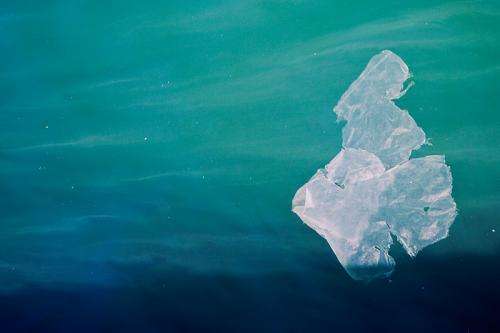Plastics highly concentrated in Australian waters

Microplastics less than 5mm in diameter are contaminating Australia's sea surface at a concentration of more than 4000 pieces per square kilometre, according to research from UWA and CSIRO's Wealth from Oceans Flagship.
Oceanographer and lead researcher Julia Reisser a PhD candidate at UWA's Oceans Institute and School of Environmental Systems Engineering, says this information is an important step in quantifying the plastic hazards that threaten Australian species and marine regions.
"The high number of small plastics present in our oceans is a toxic threat to marine organisms and environments," she says.
"They contain hazardous ingredients from manufacturing, like Bisphenol A, as well as pollutants adsorbed from the seawater, which are bioaccumulated up the marine food chain.
"Until now, we had little idea how much these tiny plastics were present in Australian waters."
Ms Reisser conducted sea surface net tows at 57 locations around Australia, enabling her to collect the characteristics and concentration of marine plastics in Australian waters.
This field data was coupled with modelling data – particle tracking over a 30 day period, and drifter trajectories within the net stations – which were then plotted on the map to show potential plastic pathways.
"Our data and modelling evidenced that Australian waters have moderate concentrations of plastic [4256.4 plastic pieces per km2] compared to those found in areas such as the Caribbean Sea and the Gulf of Maine [both around 1500 pieces per km2]," Ms Reisser says.
"Plastic hotspots were found close to cities, particularly Sydney and Brisbane, as well as in areas where ocean currents converge.
"The vast majority of the plastics in waters around Australia were smaller than 5mm microplastics resulting from the break-down of larger items, including disposable single-use plastics like plastic cups and fishing equipment made of polyethylene and polypropylene.
"These plastics are coming from a mixture of sources, including Australian and neighbouring countries' populated areas and fishing activities."
Ms Reisser says reducing the production of single-use disposable packaging such as plastic bags and bottles, as well as establishing international plastic disposal practices, are two important steps in addressing this complicated global issue.
She is also interested in the role that biotechnology could play in reducing plastic pollution.
"Biopolymers, made of organisms like seaweeds, could be a great material for creating biodegradable packaging."
"Also, we know there are some microorganisms that can slowly biodegrade plastics … perhaps one day we could develop industrial composts that use marine bacteria or fungus to transform plastic waste into biofuel."
Provided by Science Network WA



















